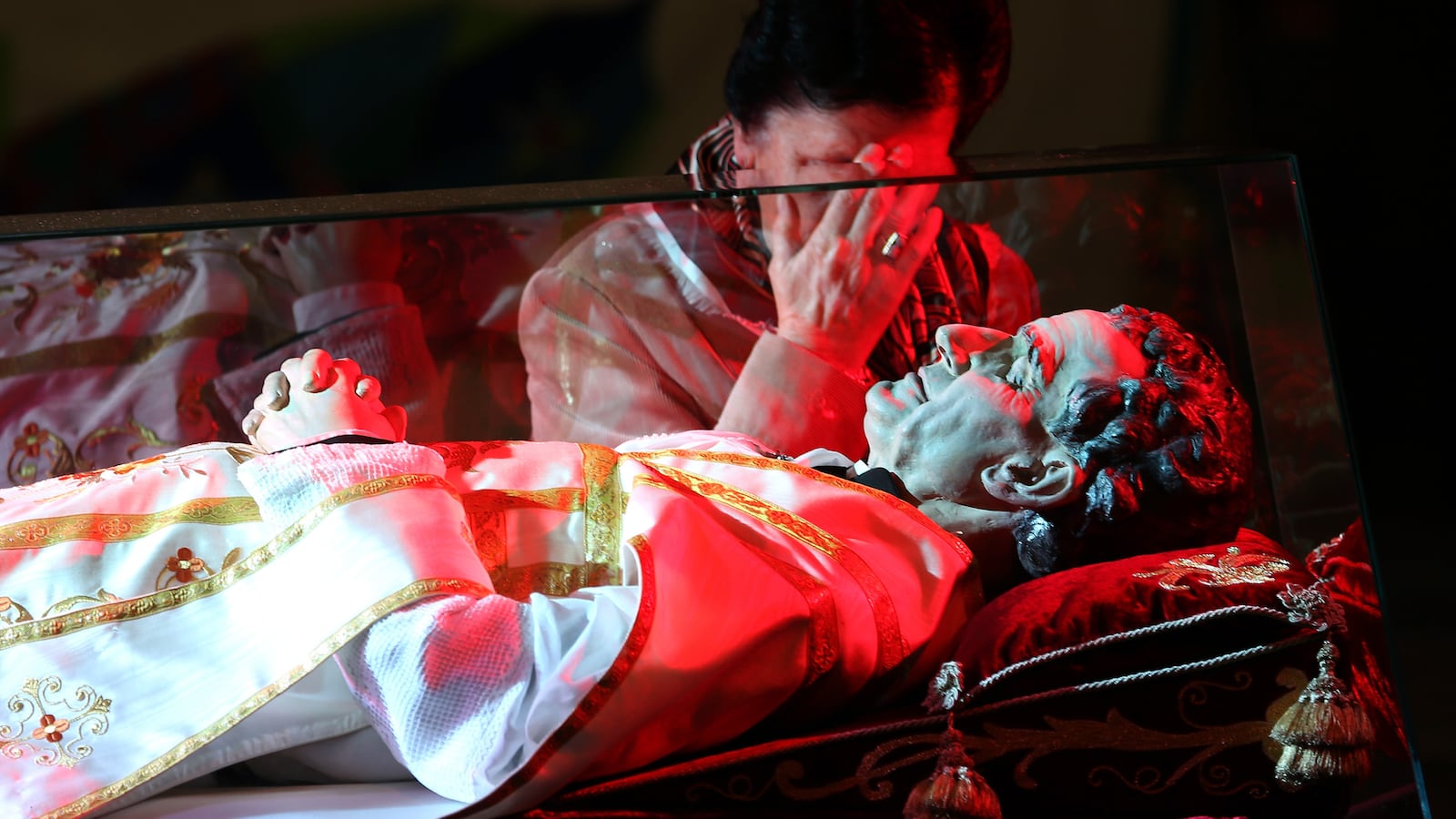ROME—There is a market for everything it would seem, including a dessicated portion of the brain of a long-dead saint. Financial gain was the apparent motive of whoever snatched the venerated bits of cerebrum belonging to St. Don Bosco that were tucked inside a simple reliquary in a northern Italian church. Any other motive is, well, simply too disturbing to contemplate.
The curious crime happened on Saturday night when a man dressed as an ordinary devout pilgrim reportedly strolled through the massive gilded halls of the basilica of Castelnuovo near the northern town of Turin with a group of religious revelers. The man apparently lingered in the small enclave behind the main altar where St. Don Bosco’s holy brains were kept as a relic. When he left the church, it was gone.
Don Bosco was the founder of the Salesian order that is well known for its work with disadvantaged young people and street children, and his work inspired parishes across Italy that cater to empowering and educating young people who might otherwise fall through society’s cracks.
When he was made a saint by Pope Pius XI in 1934, bits of his brain that had been harvested upon his death were offered as relics to represent his memory and have served as a focal point of worship for many devout Catholics.
Churches in Italy are required to have at least one holy relic, a law decreed in the Middle Ages. The most famous is the Shroud of Turin, which is thought to be a burial cloth placed over the face of Jesus. Others include a mummified right hand and forearm of St. Francis Xavier, which is kept at the Gesu Cathedral in Rome. Many other churches have fingers, feet and hearts. Praying to relics is an important part of the Catholic faith. Bits of flesh and bones from just about every part of the beatified anatomy are kept in intricate vials in churches across the country.
But there is a significant black market for relics like Don Bosco’s brain. In 2014, a tuft of material with Pope John Paul II’s blood on it, a relic from the attempt to kill him in 1981, was stolen from a church in Abruzzo. In 1983, a flap of skin thought to be Christ’s foreskin was stolen from a village in the Roman foothills where it had been entrusted to a priest who kept it hidden in his rectory. That crime allegedly was committed by a Vatican agent who reportedly didn’t want the holy prepuce to fall into the wrong hands.
John Paul II’s bloody cloth eventually esd recovered, Christ’s putative foreskin remains missing.
Immediately after Saint Don Bosco’s brain pieces disappeared, local police set up roadblocks and pored over surveillance tapes to try to identify the relic thief. They are also watching several websites where religious relics are known to be sold to collectors.
Archbishop Cesare Nosiglia of Turin, which has jurisdiction over Castelnuovo where the theft occurred, told Catholic news site Crux that he was hopeful whoever took the bits of the saint’s brain would have, as it were, a change of heart and return it, no strings attached.
“The news of the theft of a reliquary of St. Don Bosco from the church of Castelnuovo is one of those things you never wanted to hear,” said the archbishop. “I invite whoever took it to give it back immediately, without any conditions, so we can turn this painful page and continue to honor the memory of Don Bosco worthily in his birthplace,” he said. “It makes you think of the profound moral misery of someone who would steal a ‘sign’ that’s been left and conserved for the devotion and the faith of all.”






